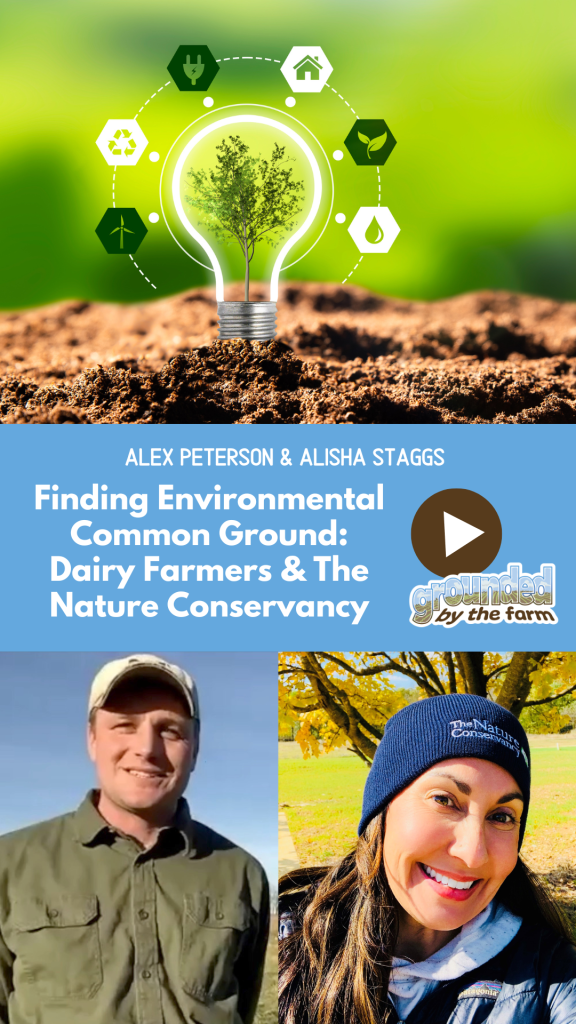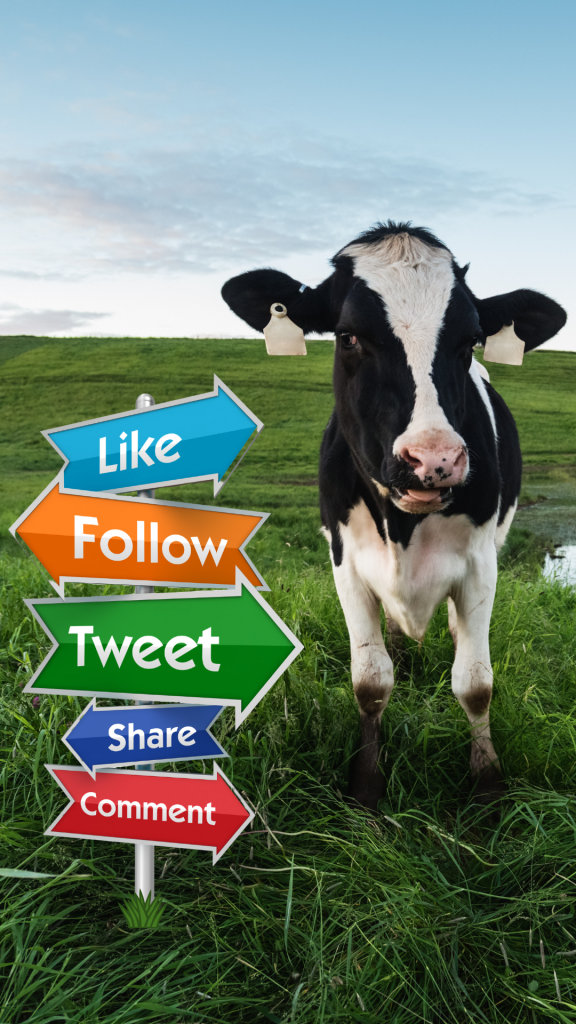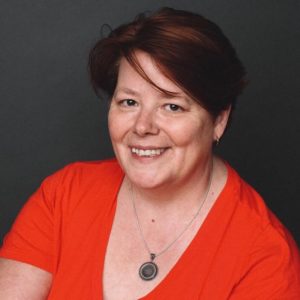Common ground is a phrase that is said less frequently these days, and environmental common ground isn’t what everyone expects happens when environmental scientists and farmers sit down together. But maybe we should.
The health of our soils, shifting weather patterns and the role of greenhouse gases and more means there is a lot to talk about and work on too. In this episode of Grounded by the Farm, we talk with Missouri dairy farmer Alex Peterson and Alisha Staggs, a sustainability expert who leads the dairy program with The Nature Conservancy‘s (TNC) North American Agriculture program. TNC is one of the world’s largest and most respected environmental organizations.
This is the third and final episode in our series on dairy. We visited two dairy farms in Oklahoma, talked to a cheesemonger and now look at the environmental footprint. Shouts out to Midwest Dairy for sponsoring the series and helping us line up participants. Please let us know if you have questions remaining about dairy.
Meeting Virtually

Alex farms with family in north central Missouri. He says the rolling hills are beautiful and well suited to grazing rather than planting crops like corn. They have a management intensive grazing operation, which basically means they move cows from one pasture to another regularly to keep the pastures growing great grasses and give the cows access to a fresh area often. He also is involved with a few groups in agriculture including Midwest Dairy saying that he finds it provides him a lot of opportunities to learn from other farmers as well as experts like Alisha.
Alisha says she grew up along the Oklahoma-Arkansas state line with family who had beef cattle. While she studied biology and everyone felt certain she was headed to becoming a veterinarian, she found her niche in supply chain sustainability. She’s worked for environmental organizations as well as in corporate sustainability. With her focus on dairy at The Nature Conservancy, she says part of the role is in connecting information as well as people as they chart a roadmap through continual environmental improvements.
I think it is safe to say, you can hear the enthusiasm all three of us have for the topic in the podcast episode!
Where is the environmental common ground?
Alisha jumped right in on the topic of grazing as she says it can often be overlooked for the contributions sustainable grazing practices have to mitigating climate change, improving soil health, increasing native wildlife and more. The prairies are such environmentally valuable properties that The Nature Conservancy has a commitment to their preservation and to restoring some of the grasslands that have been repurposed. In fact, TNC’s goal is clearly laid out on their site saying they want “to improve management on 240 million acres (30%) of U.S. grazing lands by 2030, resulting in enhanced wildlife habitat, soil carbon storage, water quality, and rural economies.”
Alex says the process of grazing enables cows to get access to grass and the breed of cows on their farm, which is actually a combination of breeds, thrive outdoors like hikers and campers. They go out into the grass, eat, spend time chewing their cuds (ie digesting the grass), leave manure out there, over time their hooves tramp the manure back into the soil fueling more grass to grow. The cycle works really well. You may remember that Oklahoma dairy farmer Logan Courtney also does similar grazing for cows on his farm.
Alex says his family has seen some of those benefits first-hand as they made changes. But that it helps to have partners like TNC to help them quantify some of the impacts and be engaged in conversations with other parts of the supply chain. He said he knows people are looking for more information about the environmental footprint and partners like The Nature Conservancy provide a level of expertise and trust.
People frequently talk about the role trees play in converting carbon dioxide to fuel plant growth, but some of the grasses in the Midwest and Plains have incredibly extensive root systems. Those root systems can, at times, be more powerful than some trees in that the depth to which they go can drive carbon sequestration deeper as well provide the soil more water holding capacity to help the prairie when rains aren’t as frequent etc.
Alisha says she’s seen a lot of variability among reports on how many of the soils are healthy or degraded, but no matter what that number is, there is unified vision that healthier soils are better for the environment, farmers and more. Alex calls it the win-win-win.
Cattle Feed and Methane?
One of the more unusual pieces of environmental common ground is likely the discussion around feed additives or supplements for cows. Alex explains that his cows have access to the pasture grasses a lot of the time and get some mixed rations that include other nutrition, etc. when they go into the milking barn. And both Alex and Alisha are excited about some of the recent studies on feed additives that could help cows be more effective with the rumen (the four stomached system that allows them to extract nutrition from grass, etc but also creates methane).
Alisha points to the dairy industry’s Net Zero Initiative and the Feed in Focus program TNC, Net Zero Initiative and agricultural input company Syngenta have focusing on sustainability and determining what works in different farm scenarios. It is currently being used in two states and will be expanded as impacts are better understood so the beneficial components can be shared widely. I found this video about the Net Zero Initiative really interesting and helpful in understanding the approach.
Alex says he is especially encouraged that the most promising additives were identified during efforts to increase milk production, which show the interconnected nature of everything on the farm. Doing something that benefits one aspect needs to be checked for impacts on the other pieces. Farmers want to do what’s right for the animals, the environment, dairy customers but also have to be able to make things work financially. Having partnerships through TNC where others in that chain are willing to help with some of the investment risks means it’s easier to take on the other risks.
It was such a productive meeting that, Alisha found a TNC ranch not far from Alex and they are looking to arrange a tour to see what can be picked up there!
Staying Up-to-Date

Connecting with The Nature Conservancy
You can find lots of information about The Nature Conservancy on their website nature.org. You can find The Nature Conservancy by searching for them on your favorite channels. Here are some of the links: Instagram as nature_org, Twitter is @nature_org and an agriculture specific one @natureag, The Nature Conservancy on Facebook, LinkedIn as The Nature Conservancy, and they have an amazing The Nature Conservancy YouTube channel.
So Much Happening with Dairy
This is the third and final episode in the series on dairy farming, but your connection to dairy is just starting if you connect online! The Undeniably Dairy website, Undeniably Dairy Instagram, Undeniably Dairy on Facebook and Dairy Good on Twitter.





